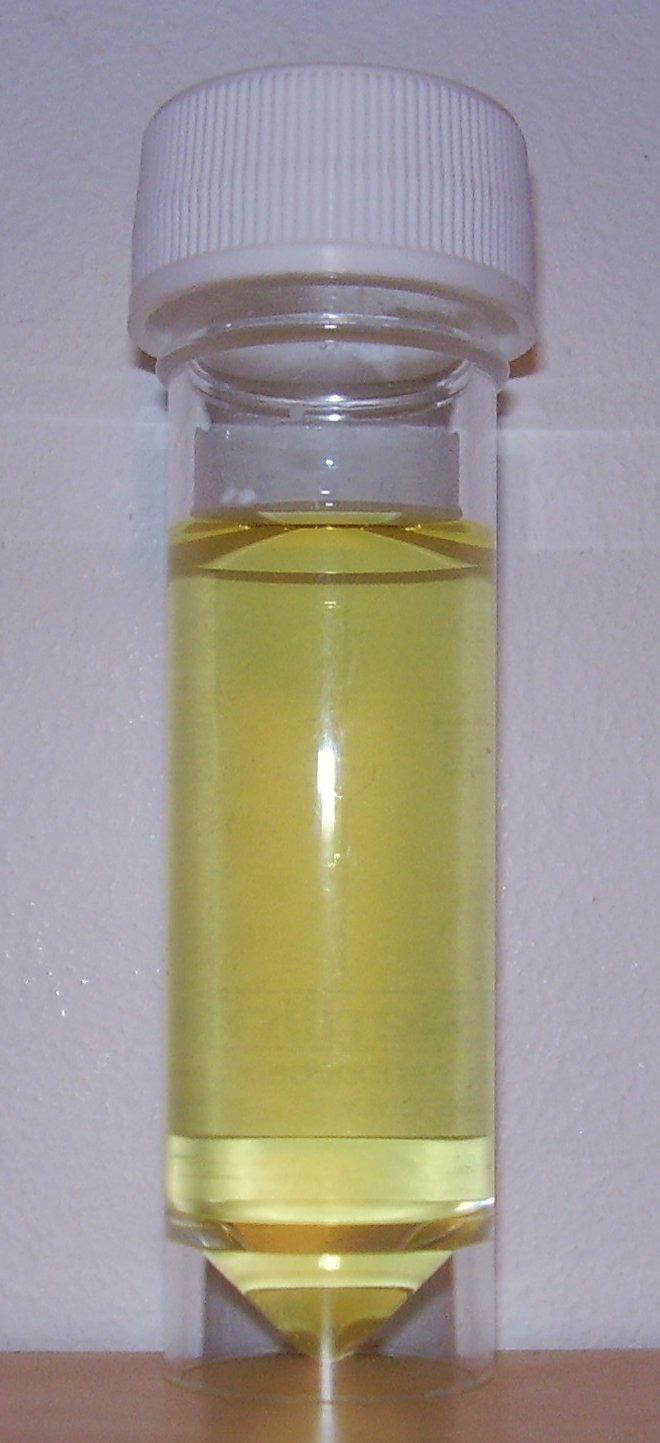Urine

Steven C. Campbell, M.D., Ph.D. Associate Editor(s)-in-Chief: Yazan Daaboul, M.D.
Synonyms and keywords: Urinary findings; Urinary abnormalities; Findings on urine exam; Urine; Urine composition; Urine output
Overview
Urine is a fluid produced by humans through the kidney, collected in the bladder, and excreted through the genital urethra. Urine formation helps to maintain the balance of minerals and other substances in the body. Urinary findings may be qualitative or quantitative. Qualitative urinary findings are often analyzed on urinalysis and urine culture. Quantitative urinary findings depends on urine output. A urinalysis (U) is an array of tests performed on urine and is one of the most common methods of medical diagnosis. A part of a urinalysis can be performed by using urine dipsticks, in which the test results can be read as color changes.
Composition of Urine

The following is a list of normal urine constituents:
- Non-organic substances: bicarbonate, chloride, phosphorus, sulphur, bromide, fluoride, iodide, rhodanide, potassium, natron, calcium, magnesium, iron, copper, zinc, cobalt, selenium, arsenium, lead, and mercury.
- Nitrogenous substances: nitrogen, urea, creatine, creatinine, guanidine, choline, carnitine, piperidine, spermidine, dopamine, epinephrine, norepinephrine, serotonin, tryptamine, levulinique amino-acid, and bilirubin
- Non-nitrogenous organic acids
- Amino acids: alanine, carnosine, glycine, histidine, leucine, lysine, methionine, phenylalanine, serine, tyrosine, valine, hydroxyloproline, galactosylhydroxylyzine, xylosylserine, and others.
- Proteins: albumin, haptoglobin, transferrin, immunoglobulins IgG, IgA, IgM, and others.
- Enzymes: lactadehydrogenase, gamma-glutamyl transferase, alpha amylase, uropepsinogene, lysozyme, beta-N-acetylglucosaminidase, urokinase, protease, and others.
- Carbohydrates: arabinose, xyloseribose, fucose, rhammose, ketopentose, glucose, galactose, mannose, fructose, lactose, sucrose, fucosylglucose, raffinose, and others.
- Vitamins: thiamine (vitamin B1), riboflavin (vitamin B2), vitamin B6, 4-pyridoxique acid, nicotinic acid, vitamin B12, biopterine, ascorbic acid (vitamin C) and others.
- Hormones: gonadotropin, corticotropin, prolactin, lactogeniques hormones, oxytocin, vasopressin, thyroxine, catecholamines (epinephrine, norepinephrine, dopamine), insulin, erythropoietin, corticosteroids (aldosterone, corticosterone, cortisone), testosterone, progesterone, estrogen and others.
- Agglutinins and precipitines: neutralizing action on the polio virus and other viruses.
- Antineoplaston: selectively prevents the development of cancer cells without affecting healthy cells that
- Allantoin: nitrogen crystalline substance that promotes healing, from the oxidation of uric acid. It is used in the manufacture of many skin creams.
- DHEA (dehydroepiandrosterone): steroid secreted by the adrenal glands, present in large quantities in male urine. It prevents obesity, prolongs the life of animals and is a possible treatment against anemia, diabetes and breast cancer. DHEA stimulates the development of the bone marrow and increases its production of red blood cells, monocytes, macrophages and lymphocytes. A low level of DHEA seems to be associated with aging.
- Gastric antisecretory products: prevent the onset and development of stomach ulcers.
- Glucoronic acid: produced by the liver, kidneys and intestines, it has a major secretory function.
- H-11: inhibits the growth of cancer cells and reduces the existing tumors without disrupting the recovery process.
- H.U.D. HUD (Human’s urine derivative): demonstrates remarkable anticancer properties.
- Interleukin-1: a positive influence on the auxiliary and inhibitory substances. Can send a signal to the hypothalamus to trigger fever.
- Trimethyl-glyoxal: destroys cancer cells.
- Prostaglandine: a hormonal substance that dilates the blood vessels, lowers tension, relaxes the muscle walls of the bronchi, stimulates contractions during labor, and many metabolic functions.
- Proteoglobulines: plasma proteins containing anti-bodies against certain allergens, they are identical to the proteins of immoglobulines blood serum.
- Prosteoses: immunological products assets allergic reactions.
Algorithm of Common Urinary Findings
| Urinary Findings | |||||||||||||||||||||||||||||||||||||||||||||||||||||||||||||||||||||||||||||||||||||||||||||||||||||||||||||||||||||||||||||||||||||||||||||||||||||||||||||||||||||
| Quality (Composition) | Quantity (Volume) | ||||||||||||||||||||||||||||||||||||||||||||||||||||||||||||||||||||||||||||||||||||||||||||||||||||||||||||||||||||||||||||||||||||||||||||||||||||||||||||||||||||
| Urinalysis | Urine culture | Urine output | |||||||||||||||||||||||||||||||||||||||||||||||||||||||||||||||||||||||||||||||||||||||||||||||||||||||||||||||||||||||||||||||||||||||||||||||||||||||||||||||||||
| High urine output | Low urine output | ||||||||||||||||||||||||||||||||||||||||||||||||||||||||||||||||||||||||||||||||||||||||||||||||||||||||||||||||||||||||||||||||||||||||||||||||||||||||||||||||||||
| Urine odor | Color and Turbidity | Specific gravity or osmolality | Urinary pH | Hematuria | Pyuria | Proteinuria | Cells | Casts and Crystals | Other | ||||||||||||||||||||||||||||||||||||||||||||||||||||||||||||||||||||||||||||||||||||||||||||||||||||||||||||||||||||||||||||||||||||||||||||||||||||||||||||
| Polyuria | Oliguria | Anuria | |||||||||||||||||||||||||||||||||||||||||||||||||||||||||||||||||||||||||||||||||||||||||||||||||||||||||||||||||||||||||||||||||||||||||||||||||||||||||||||||||||
Urine Odor
Urine is usually odorless but can produce pungent smells following the consumption of certain foods (e.g. asparagus)
Urine Color and Turbidity
Color
Below is a table that lists common urine discolorations and their associated conditions.
| Urine Color | Associated Conditions |
| Clear or Light Yellow | Normal urine color |
| Dark Yellow | Dehydration, vitamin B12 administration |
| Greenish/Yellow | Vitamin B administration |
| Yellow-Red | Laxatives |
| Orange | Rifampicin, nitrofurantoin, pyridium |
| Dark / Black | Alkaptonuria, porphyria, sarcoma |
| Milky | Lymphatic fistulas |
| Opaque | Bacteria, Cells |
| Dark Red/Pink | Concentrated, hematuria, hemoglobinuria, myoglobinuria, Ingestion of certain foods (colored candy, berries, or beets) |
| Yellowish-Brown | Hyperbilirubinemia |
| Pale | Polyuria, chronic kidney disease |
| Foamy or Frothy | Proteinuria |
| With sediment | Precipitation of urate salts |
| Cloudy | Pyuria, tissue components |
| With intestinal contents | Intestinal fistulas |
To view a complete comprehensive list of causes that are are associated with urine discoloration, click here
Turbidity
- Normal urine is usually clear
- Turbid urine may be a manifestation of urinary bacterial infection, hematuria, proteinuria, pyuria, or presence of crystals and casts.
Urine Specific Gravity and Osmolality
Urine Specific Gravity
- Normal urine specific gravity (density) ranges between 1.003 and 1.035 g.cm-3.
- Specific gravity outside the normal range may sometimes be associated with urinary disorders.
Urine Osmolality
- In healthy individuals with restricted fluid intake, urine osmolality should be > than 800mOsm/kg.
- 24-hour urine osmolality normally ranges between 500 and 800 mOsm/kg.
- Random urine osmolality normally ranges between 50 and 1400 mOsm/kg.
Increased urine osmolality
- Acidosis
- Addison's Disease
- Congestive Heart Failure
- Hepatic cirrhosis
- Hypernatremia
- Shock
- Syndrome of Inappropriate Anti Diuretic Hormone (SIADH)
Decreased urine osmolality
- Aldosteronism
- Amyloidosis
- Chronic Interstitial Nephritis
- Chronic pyelonephritis
- Diabetes Insipidus
- Primary polydypsia
- Glomerulonephritis
- Hypercalcemia
- Hypokalemia
- Lithium nephrotoxicity
- Nephrogenic diabetes insipidus
- Polycystic kidneys
- Renal Tubular Necrosis
Urinary pH
- The pH of urine is normally close to neutral pH = 6 to 7 (Range: 4.5 to 8.2).
- Strongly acidic or alkaline urine may be manifestations of the following:
Renal and urologic diseases
- Urinary tract infection
- Acute kidney injury
- Chronic kindey disease
- Renal tubular acidosis
Systemic diseases
- Diabetes Mellitus
- Diarrhea
- Vomiting
- Fanconi's Syndrome
- Increased protein catabolism
- Lupus erythematosus
- Metabolic/respiratory alkalosis or acidosis
- Protein rich diet
Drug administration
- Acetazolamide
- Aldosteronism
- Amyloidosis
- Antibiotics
- Sodium acetate
- Sodium bicarbonate
- Sodium lactate
Hematuria
Pyuria
Pyuria is defined as the presence of 10 or more white cells per cubic millimeter in a urine specimen, 3 or more white cells per high-power field of unspun urine, a positive result on Gram’s stain of an unspun urine specimen, or a urinary dipstick test that is positive for leukocyte esterase[1]
Pyuria may first be classified based on gross/microscopic examination
Pyuria may also be classified based on the presence/absence of detectable infection
- Bacteriuria (detectable bacteria in urine)
- Sterile pyuria (non-infectious cause or an infection that is undetected on regular gram-stain and urine culture)
Proteinuria
- Albuminuria
- Microalbuminuria
- Macroalbuminuria
- Paraproteinuria
Cells
- Benign
- Malignant
Casts and Crystals
Casts
To view a comprehensive list of urinary cast types and the characteristics of each cast type, click here
Acellular casts
- Hyaline casts
- Granular casts
- Waxy casts
- Fatty casts
- Pigment casts
- Crystal casts
Cellular casts
- RBC casts
- WBC casts
- Bacterial casts
- Epithelial cell casts
Crystals
- Struvite crystals (magnesium-ammonium-phosphate)
- Bilirubin crystals
- Calcium carbonate crystals
- Amorphous crystals
- Calcium oxalate dihydrate crystals
- Cystine crystals
Other
Urinary beta-HCG (urinary pregnancy test)
Myoglobinuria
Glucosuria
Ketonuria
Bilirubinuria
Eosinophiluria
- Acute interstitial nephritis
- Atheroembolic renal disease
- Rapidly progressive glomerulonephritis
- Urinary tract infection
To view a comprehensive list of causes of eosinophiluria, click here
Bacterial antigens
Sperm
Urinary drug concentration
- Drug testing uses urinalysis to test for certain chemicals which are typically present in the urine only after recreational drug use.
- These tests must be requested specifically or as part of a toxicology screen, and are not part of a routine urinalysis.
Dissolved electrolytes or heavy metals
Calciuria (urinary calcium) differential diagnosis:
- Bone metastases
- Diets low in calcium
- Hypervitaminosis
- Idiopathic hypercalciuria
- Increased calcium intake
- Multiple Myeloma
- Paget's Disease
- Primary hyperparathyroidism
- Prolonged immobilization
- Pseudoparahypothyroidism
- Renal Tubular Acidosis
- Renal osteodystrophy
- Sarcoidosis
- Steroids
- Vitamin D deficiency
- Vitamin D resistant ricketts
Catecholamines
| Parameter | Upper reference range in the urine per 24 hours |
| Norepinephrine | 23-105 micrograms/24 hours |
| Dopamine | 190-450 micrograms/24 hours |
| Metanephrine | 74-297 micrograms/24 hours |
| Normetanephrine | 105-354 micrograms/24 hours |
| Vanillic acid | 3.3-6.5 mg/24 hours |
| Vanillyl mandelic acid | 17-33 micromol/liter (3.3-6.5 mg/24 hour) |
Differential Diagnosis of urinary catecholamines
- Medication-induced
- Ganglioma
- Multiple endocrine neoplasia type 2
- Neuroblastoma
- Pheochromocytoma
- Stress
Urine Culture
Normal urine is sterile. Presence of microorganisms in urine culture may be associated with urinary infections or colonization.
- Bacteria: Bacteriuria
- Fungi: Funguria
Urine Quantity (Volume)
- The amount of urine produced depends on hydration (volume of fluid intake), physical activity, environmental factors, body surface area, and general health condition.
- In adult humans, the average urine production is approximately 1 L to 2 L per 24 hours.
High Urine Output
- Polyuria: Excessive urinary production > 2.5 L per 24 hours
Low Urine Output
Low urine output may be either oliguria or anuria:
- Oliguria: Urine production < 400 mL / 24 hours in adults. A more specific definition includes the following:
- Infants: oliguria is defined as urine output < 1 mL/kg/hr[2]
- Children: Oliguria is defined as urine output < 0.5 mL/kg/hr.
- Aduults: Oliguria is defined as urine output < 17 to 21 ml/hr.
For a detailed explanation of oliguria, click here.
- Anuria: Urine production < 100 mL / 24 hr in adults.
For a detailed explanation of anuria, click here.
References
- ↑ Horan, Teresa C.; Andrus, Mary; Dudeck, Margaret A. (2008-06). "CDC/NHSN surveillance definition of health care-associated infection and criteria for specific types of infections in the acute care setting". American Journal of Infection Control. 36 (5): 309–332. doi:10.1016/j.ajic.2008.03.002. ISSN 1527-3296. PMID 18538699. Check date values in:
|date=(help) - ↑ Klahr S, Miller S (1998). "Acute oliguria". N Engl J Med. 338 (10): 671–5. doi:10.1056/NEJM199803053381007. PMID 9486997. Free Full Text.